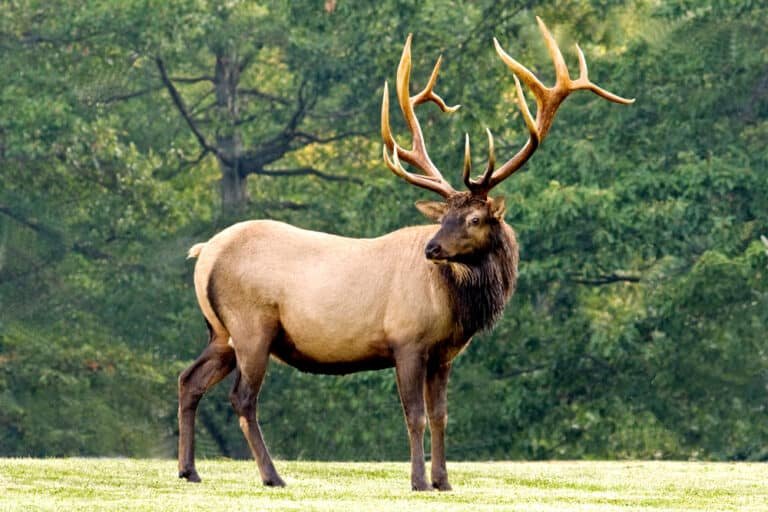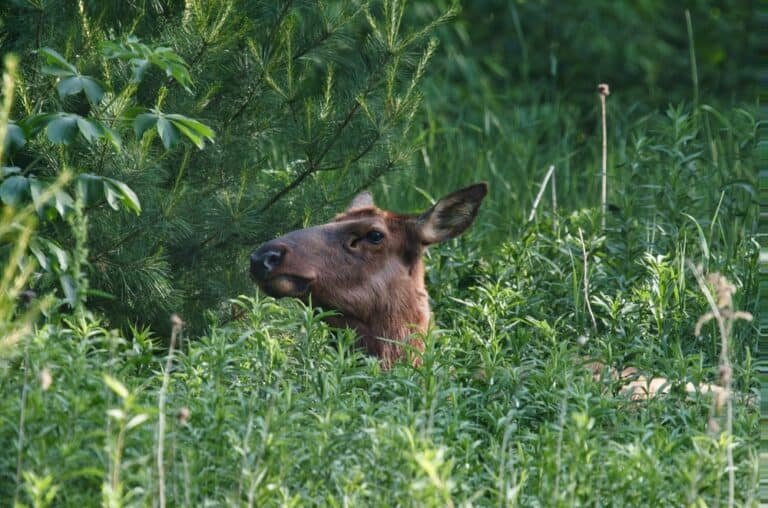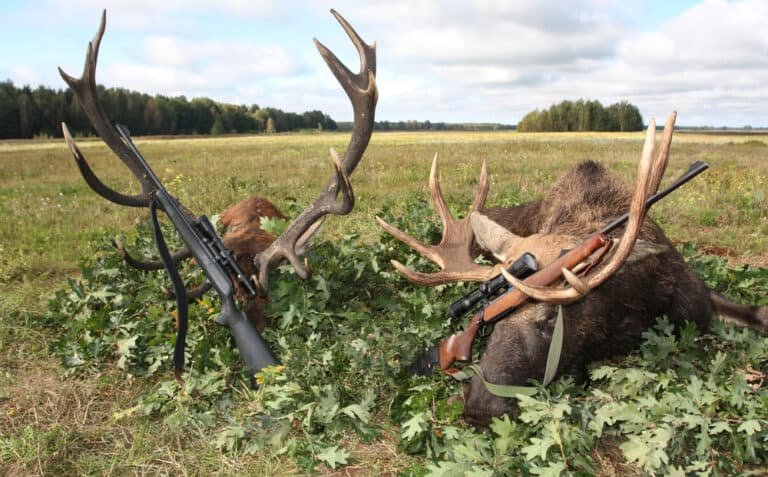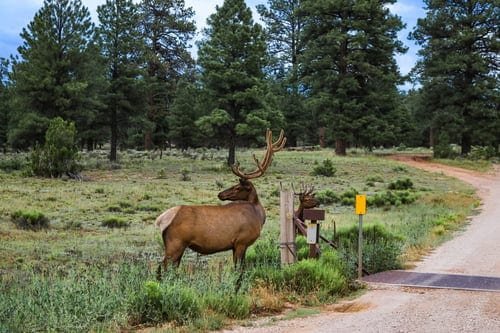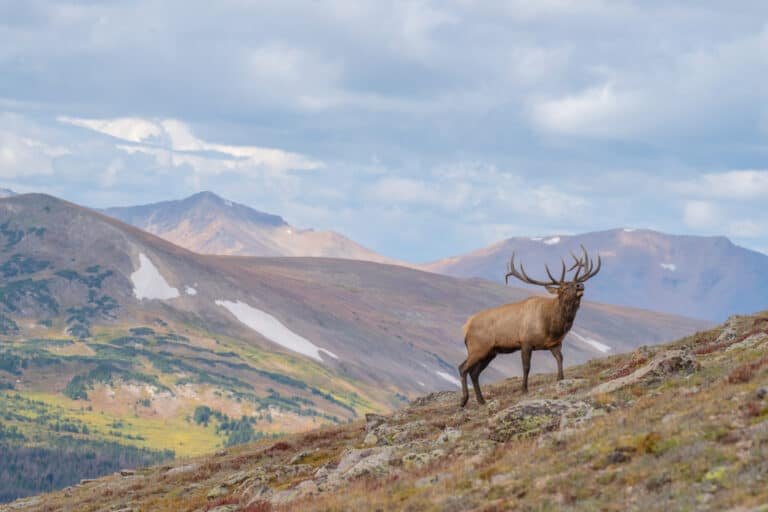Elk Hunting in Washington – What You Need to Know!
Elk hunting in Washington is an exhilarating outdoor pursuit that combines the thrill of the chase with a deep appreciation for nature’s wonders. With its diverse landscapes, the state provides a prime habitat for two species of elk: the Rocky Mountain elk and the Roosevelt elk. These majestic creatures roam through sprawling forests, mountainous regions, and open meadows, offering hunters an awe-inspiring experience in pursuit of their quarry.
Brief overview of elk hunting in Washington
Washington boasts a rich hunting heritage that spans generations. Elk hunting has been an integral part of this tradition, attracting enthusiasts from near and far.
The state’s vast expanse offers ample opportunities for hunters to test their skills and embark on unforgettable adventures amidst breathtaking scenery. Elk are highly valued game animals due to their size, strength, and remarkable antler growth.
In Washington, both Rocky Mountain and Roosevelt elk can be found, each with its own unique characteristics. The Rocky Mountain elk inhabits the eastern region of the state characterized by rugged terrain and dense forests, whereas the Roosevelt elk thrives along the western coast amidst old-growth forests.
Importance of elk hunting for conservation and management
Elk hunting plays a crucial role in wildlife conservation efforts in Washington. Carefully regulated hunting seasons help maintain sustainable population levels while ensuring healthy ecosystems. By managing elk populations through controlled hunts, biologists can prevent overgrazing that may harm other vegetation or disrupt natural habitat balance.
Moreover, revenue generated from license fees directly contributes to funding wildlife management programs throughout the state. This financial support enables authorities like the Washington Department of Fish and Wildlife (WDFW) to implement scientific research initiatives aimed at better understanding elk populations’ behaviors and needs.
Significantly, responsible hunters contribute to data collection efforts by reporting harvest information such as age class and sex ratios. This data proves invaluable in evaluating population dynamics, habitat quality, and overall herd health.
By actively participating in these efforts, hunters become stewards of the land, ensuring the long-term sustainability of elk populations for future generations to enjoy. So, lace up your boots, sharpen your senses, and embrace the wilderness.
Washington elk hunting beckons with its grandeur and promise of unforgettable experiences. Let us now delve deeper into the specifics of understanding Washington elk and navigating the exciting world of hunting regulations and seasons.
Understanding Washington Elk
Species of elk found in Washington (Rocky Mountain and Roosevelt)
In Washington State, two main species of elk can be found: the Rocky Mountain elk (Cervus canadensis nelsoni) and the Roosevelt elk (Cervus canadensis roosevelti). The Rocky Mountain elk tends to inhabit the eastern part of the state, while the Roosevelt elk is more prevalent in the western regions. These majestic creatures are both subspecies of North American elk, distinguished by their physical characteristics and habitat preferences.
The Rocky Mountain elk is slightly smaller in size compared to its Roosevelt counterpart, with a lighter brown coat. On the other hand, Roosevelt elks have a darker brown coat and are known to be larger-bodied animals.
Habitat preferences and behavior patterns
Elk in Washington demonstrate specific habitat preferences based on their respective subspecies. The Rocky Mountain elk thrives in mountainous regions with open meadows, foothills covered with dense forests, and coniferous forests at higher elevations. They rely on this diverse habitat for foraging on grasses, shrubs, and other vegetation that provides necessary nutrients during different seasons.
On the contrary, Roosevelt elks prefer dense coastal rainforests with abundant browse options such as ferns, salal bushes, and various tree species like Western Hemlock or Douglas Fir. When it comes to behavior patterns, both species exhibit similar traits but may differ slightly due to their habitats’ distinct characteristics.
Elks are social animals that typically form large herds consisting of females (cows) and their offspring called calves. Male elks (bulls) often form separate bachelor groups outside of breeding season or during rutting season when they compete for dominance over mating rights.
During winter months when food sources become scarcer at higher elevations or coastal areas due to snowfall, elks may migrate to lower elevations in search of better forage. Understanding these behavior patterns is crucial for successfully locating and hunting elk in Washington.
Population size, distribution, and migration routes
The population size of elk in Washington has fluctuated over the years due to various factors such as hunting pressure, habitat changes, and predator-prey dynamics. Currently, the estimated population of Rocky Mountain elk ranges between 60,000-70,000 individuals. Roosevelt elk populations are estimated to be around 55,000-60,000 individuals.
These numbers are subject to annual fluctuations based on environmental conditions and management efforts. Elk distribution in Washington is closely tied to their preferred habitats mentioned earlier.
Rocky Mountain elk are primarily found in the northeastern part of the state near mountain ranges like the Cascades or Blue Mountains. Roosevelt elk have a stronghold along the Olympic Peninsula and areas surrounding Grays Harbor and Pacific counties.
Regarding migration routes, it is important to note that not all elk engage in long-distance migrations. However, some herds within both subspecies exhibit migratory behavior driven by seasonal food availability or weather conditions.
For instance, during harsh winters when snow covers higher elevations or coastal regions become stormy and inundated with rainwater runoff from mountainsides leading to limited accessibility to food sources; elk may undertake migrations toward lower elevation wintering grounds where forage remains accessible throughout the colder months. Understanding these aspects of Washington’s elk population helps hunters make informed decisions about where to find them during different seasons and plan their hunting strategies accordingly.
Hunting Regulations and Seasons
When it comes to hunting elk in Washington, one must become familiar with the governing body responsible for regulating wildlife activities: the Washington Department of Fish and Wildlife, known as WDFW.
This dedicated organization plays a crucial role in managing the state’s elk populations, ensuring sustainable hunting practices while also focusing on conservation efforts. The WDFW constantly monitors elk populations, conducts research, and collaborates with other agencies to establish rules and guidelines that strike a balance between recreational hunting opportunities and preserving these majestic creatures.
Licensing requirements for residents and non-residents
Whether you are a resident or a non-resident itching to embark on an elk hunting adventure in Washington, there are certain licensing requirements you need to fulfill. For residents, obtaining an elk license involves purchasing an annual combination license or a big game license that includes the option for elk hunting.
Non-residents, on the other hand, are required to apply for special permits through a lottery system due to limited tags available annually. These permits can be obtained through an application process administered by the WDFW.
Different hunting seasons (archery, muzzleloader, rifle) and tag allocation system
Washington offers different hunting seasons to cater to various preferences and techniques utilized by hunters. Archery enthusiasts can take advantage of their skills during archery-only seasons that typically occur earlier in the year when elk behavior patterns differ from later rifle seasons. Muzzleloader hunters have their own dedicated season as well if they enjoy the challenge presented by these historical firearms.
The general rifle season follows suit after archery/muzzleloader hunts have concluded successfully. To ensure effective management of elk populations while providing fair opportunities for hunters, Washington implements a tag allocation system where each hunter selected through the lottery is issued a specific tag indicating the type of weapon and hunting season they are allowed to participate in.
This system helps regulate the number of hunters per unit and ensures sustainable harvest practices. By understanding the regulations set forth by the WDFW, hunters can enjoy their elk hunting experience while contributing to conservation efforts and maintaining a thriving ecosystem for generations to come.
Preparing for the Hunt
Researching hunting units and scouting potential areas
Before embarking on an epic elk hunting adventure in Washington, it is crucial to do your homework. Take the time to research different hunting units and carefully scout potential areas. Consider factors such as accessibility, terrain, and vegetation types.
Look for areas that offer a blend of dense forests, open meadows, and water sources like streams or lakes. Elk are known to frequent these areas as they provide both food and cover.
Topography, vegetation, water sources, and food availability
Once you’ve identified potential hunting units or areas, pay close attention to their topography. Washington’s diverse landscape offers a range of elevations from lowland forests to alpine meadows.
Elk tend to move through different elevations depending on the season and weather conditions. Familiarize yourself with the specific topographical features of your chosen area so you can plan your approach accordingly.
Vegetation is another critical aspect when considering elk behavior and movement patterns. Learn about the types of vegetation prevalent in your chosen area—whether it’s thick timber stands or expansive grasslands—since elk rely on different plants for both cover and nourishment.
Water sources play a vital role in attracting elk throughout the year. Consider locating areas with rivers, streams, or natural springs nearby as these are often favored by elk for drinking purposes.
Understanding food availability is essential for a successful hunt. Study what types of plants (grass species or browse) are abundant during each season in your targeted area as this will help you anticipate where elk may be feeding at various times throughout the year.
Utilizing maps, online resources, and local knowledge
Armed with your knowledge about topography, vegetation types, water sources, and food availability within your chosen hunting unit or area—now it’s time to fine-tune your plans. Utilize maps, both physical and digital, to mark potential hotspots and study the lay of the land from different perspectives.
Online resources, such as hunting forums or state wildlife agency websites, can provide valuable insights into elk behavior and recent sightings. In addition to maps and online resources, tapping into local knowledge is invaluable.
Engage with experienced hunters or locals who are familiar with the area you intend to hunt in. They can offer firsthand advice on elk movement patterns, preferred feeding areas, and even specific hunting techniques that work well in that particular region.
Gear essentials for a successful hunt
When it comes to gear for Washington elk hunting, three essential categories deserve your close attention: firearms or archery equipment selection, clothing layers suitable for varying weather conditions, and optics for glassing terrain.
Choosing the right firearm or archery equipment is a personal decision based on your proficiency and preferences. Ensure you have a weapon capable of delivering ethical shots at distances appropriate to your skill level. If opting for archery equipment, consider draw weight, arrow penetration capabilities, and accuracy.
Washington’s weather can be unpredictable at times. Therefore, dressing appropriately in multiple layers is crucial. Start with a moisture-wicking base layer that keeps sweat away from your body during strenuous hikes uphill.
Add insulating layers like fleece or down jackets depending on the temperature levels you anticipate encountering during your hunt. Don’t forget a waterproof outer layer to protect you from rain or snow.
Elk hunting often involves spending long hours glassing terrain in search of elusive game animals. Investing in high-quality optics such as binoculars and spotting scopes is worth every penny.
These tools enable you to scan vast areas efficiently while enhancing clarity and magnification for better target identification. By thoroughly researching hunting units and scouting potential areas—taking into account topography, vegetation types, water sources, and food availability—you will be well-prepared for a successful hunt in Washington.
Utilize maps, online resources, and tap into local knowledge to fine-tune your plans. And don’t forget to equip yourself with the appropriate gear, including suitable firearms or archery equipment, clothing layers for varying weather conditions, and top-notch optics.
With these preparations in place, you’ll be ready to embark on an unforgettable elk hunting adventure in the stunning landscapes of Washington.
Hunting Techniques
Spot-and-Stalk Method
When engaging in the spot-and-stalk method of elk hunting, it is crucial to possess a keen eye for identifying elk signs. Keep a lookout for fresh tracks, rubs on trees where bulls have scraped their antlers, and wallows where elk have rolled around in mud or water. These signs indicate recent activity and can lead you to areas with higher elk presence.
Another key aspect of this technique is glassing open areas or timber edges. Utilizing binoculars or spotting scopes allows you to scan the landscape for any sign of movement or the distinguishable shapes of grazing elk.
Pay close attention to meadows, clearings, and transition zones between different types of vegetation. Once you spot an elk or identify promising signs from a distance, the next step is to close the distance stealthily while using natural cover effectively.
Move slowly and quietly, utilizing terrain features such as hillsides, trees, and bushes to remain concealed as you approach your target. Patience and careful footwork are essential here to avoid alerting the wary senses of these majestic creatures.
Calling Strategies
Understanding different elk vocalizations is paramount when using calling strategies during your hunt. Elk communicate through bugles (the iconic sound associated with bull elks) and cow calls (used by cows during mating season).
Familiarize yourself with these sounds by listening to recordings or watching videos online. To locate bulls or attract them during rut season when they are most responsive to calling, use calls strategically.
Bugles can be employed as a locator call—sending out a series of bugle sounds at varying volumes and intensities—to elicit responses from nearby bulls that may be potential targets. Mastering calling techniques that mimic natural sounds is an art form in itself.
Practice your bugling skills until you can accurately replicate different pitch variations and durations. Similarly, learning cow calls can help you imitate the sounds made by female elk, which can be used to appeal to curious bulls or draw in an entire herd.
Stand Hunting from Tree Stands or Ground Blinds
Stand hunting from tree stands or ground blinds offers a different approach to elk hunting. By strategically positioning yourself in an elevated tree stand or a well-concealed ground blind, you can enhance your chances of spotting elk as they move through their natural habitat.
When choosing a location for your stand, consider travel corridors such as ridgelines and game trails that elk frequent. Look for signs of recent activity like fresh tracks and droppings.
Setting up near water sources or feeding areas is also beneficial. Ensure that your stand is well-hidden and scent-free, taking advantage of surrounding vegetation for camouflage.
When using ground blinds, remember to brush them in with natural materials like branches and leaves to blend seamlessly with the environment. In both cases, patience is key.
Remain completely still and alert while waiting for elk to come into view. Stay attuned to the sounds of the forest, listening for twigs snapping or rustling leaves that may indicate approaching game.

Conclusion
Elk hunting in Washington presents a thrilling opportunity for outdoor enthusiasts seeking adventure in breathtaking landscapes. By employing effective hunting techniques such as spot-and-stalk methods, calling strategies tailored to each season’s conditions, and stand hunting from well-positioned vantage points, hunters can greatly increase their odds of success.
Remember that while harvest rates may vary depending on factors beyond our control, the true essence of elk hunting lies not just in filling tags but rather immersing oneself in nature’s grandeur and appreciating the majesty of these magnificent creatures.
Whether you embrace the challenge with a bow or rifle in hand, Washington’s abundant elk population promises an unforgettable experience filled with memories that will last a lifetime. So, don’t hesitate to embark on this thrilling pursuit and discover the wonders that await you amidst the scenic wilderness of Washington.

